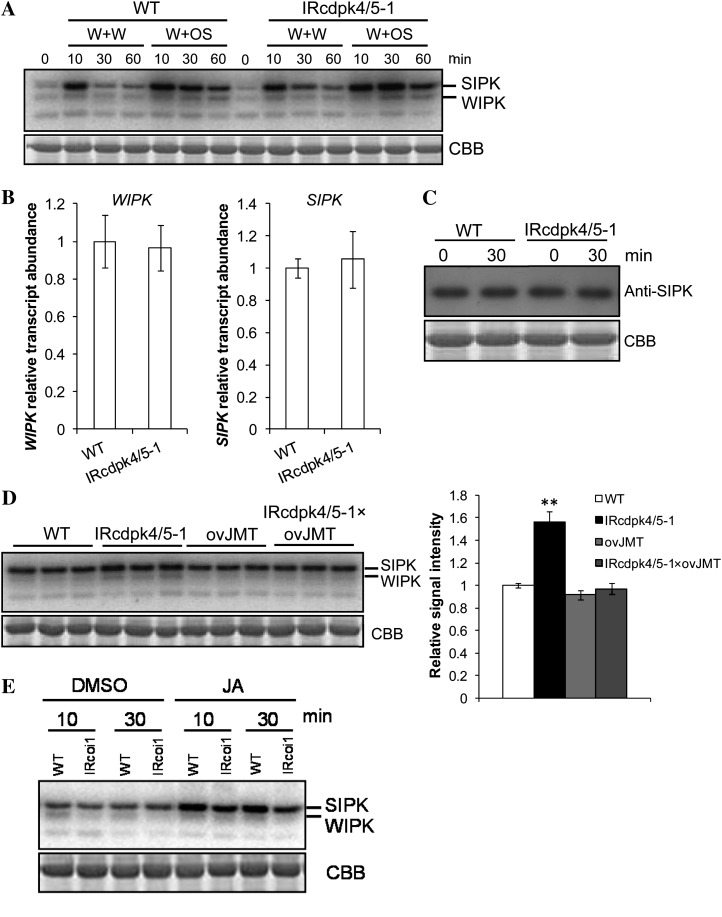Figure 8.
IRcdpk4/5 plants have increased levels of SIPK activity caused by high JA accumulation. A, MAPK activity assay in wild-type (WT) and IRcdpk4/5-1 plants that were treated with W + W and W + OS. B, Transcript levels (mean ± se) of WIPK and SIPK in WT and IRcdpk4/5-1 plants 30 min after W + OS treatment (Note: Levels of SIPK and WIPK in WT are designated to 1). C, Protein-blotting analysis of SIPK protein abundance in WT and IRcdpk4/5-1 plants before and 30 min after W + OS treatment. D, MAPK activity levels in WT, IRcdpk4/5-1, ovJMT, and IRcdpk4/5-1 × ovJMT plants 30 min after being treated with W + OS (three biological replicates each). Right section: quantification of relative band intensities (mean ± se; the average intensity of WT samples was designated as 1); asterisks represent significant difference between WT and other plants (n = 3, Student’s t test; **, P < 0.01). E, Exogenous supplementation of JA to N. attenuata activates MAPKs. JA (200 μg/mL in 5% DMSO) or 5% DMSO was pressure infiltrated into N. attenuata WT or IRcoi1 leaves and the induced MAPK activity was determined in samples (pooled from three biological replicates) harvested at indicated times. CBB, Coomassie Brilliant Blue (photographs of the Rubisco large subunit that were visualized by staining the gels with CBB).

